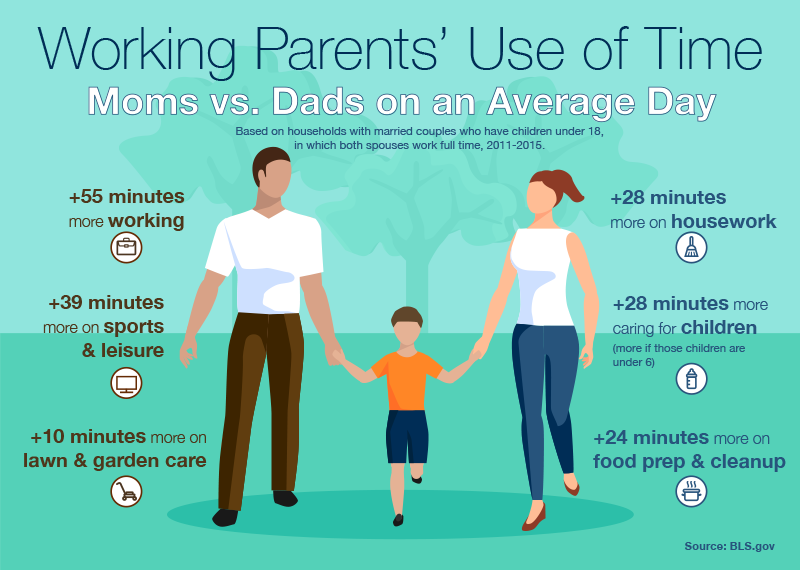Editor’s note: The following has been cross-posted from the U.S. Department of Labor blog. The writer is Rachel Krantz-Kent, an economist at the U.S. Bureau of Labor Statistics.
On any given day, about 80 percent of the population age 15 and up watch television, and they watch for an average of 3 hours 29 minutes.* That’s an interesting piece of trivia, you may be thinking, but why does the Bureau of Labor Statistics need to know that? Without context, TV watching may seem like an odd area of focus — but this is just one of many statistics we collect as part of the American Time Use Survey. And Americans across the country use that information every day to get their jobs done.
The statistics above, for example, may be helpful to those promoting healthy behaviors and products, such as those who work in the health and fitness industries. The data can also be useful to television producers in determining programming.
Unlike other BLS surveys that track employment, wages, and prices, the American Time Use Survey tracks a less conventional, but equally important, economic resource that we never have enough of: time. The survey compiles data on how much time Americans spend doing paid work, unpaid household work (such as taking care of children or doing household chores), and all the other activities that compose a typical day.
Some of these measurements have economic and policy-relevant significance. For example, the time people spend doing unpaid household work has implications for measures of national wealth. Information about eldercare providers and the time they spend providing this care informs lawmakers. Measures of physical activity and social contact shed light on the health and well-being of the population. And information about leisure—how much people have and how they spend it—provides valuable insight into the quality of life in the United States.
All of the data are publically available and used by businesses, government agencies, employers, job seekers, and private individuals to examine the different time choices and tradeoffs that people make every day. Here are some other interesting facts the survey reveals about how Americans spend their time.
Unpaid household work: 66 percent of women prepare food on a given day, compared with 40 percent of men.
Why it’s important: These statistics measure one aspect of women’s and men’s contributions to their families and households and help promote the value of all work people do, whether or not they are paid to perform it. Compared with men, women spend a greater share of their time doing unpaid household work, such as food preparation. Statistics like these can shed light on barriers to equal opportunities for women.
 Editor’s note: A text-only version of the graphic is below.
Editor’s note: A text-only version of the graphic is below.
Where people work: 38 percent of workers in management, business, and financial operations occupations and 35 percent of those employed in professional and related occupations do some or all of their work at home on days they work. Workers employed in other occupations are less likely to work at home.
Why it’s important: Information like this is important for people starting or changing careers. For those interested in this aspect of job flexibility, or for those who want more separation between their work and home, this information can help them identify occupations that are the right fit and decide which careers to pursue.
Childcare: Parents whose youngest child is under age 6 spend 2 hours 8 minutes per day on average providing childcare as their main activity, compared to 1 hour for parents whose youngest child is between the ages of 6 and 12. (These estimates do not include the time parents spend supervising their children while doing other activities.)
Why it’s important: Parenting can be an intense experience for many reasons, including the time it demands of parents. These statistics provide average measures of the time involved in directly caring for children. The data can be helpful to health and community workers whose work supports parents, as well as employers interested in developing ways to promote work-life balance and staff retention.
Eldercare: 61 percent of unpaid eldercare providers are employed.
Why it’s important: Knowing the characteristics of those who provide unpaid care for aging family, friends, and neighbors can help lawmakers create targeted policies and aid community workers in developing supportive programs.
Transportation: Employed people spend an average of 1 hour 6 minutes driving their vehicles, 7 minutes in the passenger seat, and 8 minutes traveling by another mode of transportation on days they work.
Why it’s important: Knowing how workers travel and the amount of time they spend using different modes of transportation can be useful to a variety of people, including city and transportation planners, land and real estate developers, and designers in the automobile industry.
This is just a snapshot of the information available from the American Time Use Survey, all of which is used by researchers, journalists, educators, sociologists, economists, lawmakers, lawyers, and members of the public. View the data listed above and find out more about how time-use data can be used.
* All data are from the 2014 and 2015 American Time Use Surveys.
Working Parents’ Use of Time
Moms vs. Dads on an Average Day
Based on households with married couples who have children under age 18, in which both spouses work full time, 2011–15.
| Dads | Moms |
| +55 minutes more working | +28 minutes more on housework |
| +39 minutes more on sports and leisure | +28 minutes more caring for children (more if those children are under 6) |
| +10 minutes more on lawn & garden care | +24 minutes more on food prep & cleanup |
 United States Department of Labor
United States Department of Labor